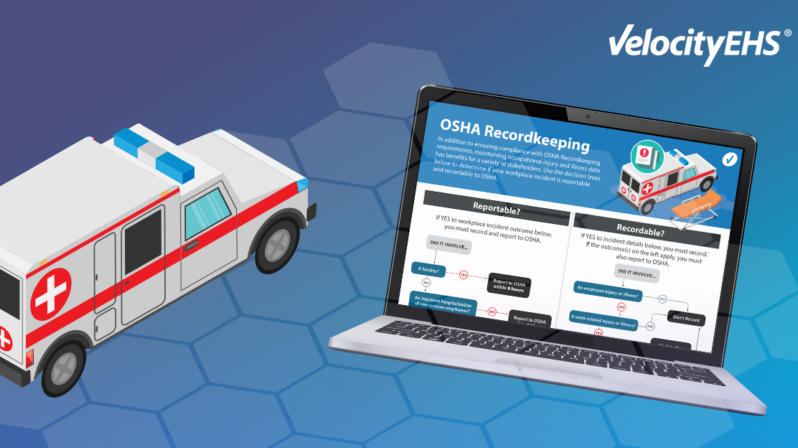OSHA Recordkeeping and Reporting Requirements help protect the safety of employees by requiring many employers to keep records of occupational injuries and illnesses. Covering over 750,000 employees and 1.5 million establishments, it allows both employers and employees to better understand how the company is performing regarding safety and actions taken to mitigate hazards in the workplace. The Standard also requires employers to report certain serious categories of injuries and illnesses (fatalities, hospitalizations, and incidents resulting in an amputation or loss of eye) directly to OSHA within established timeframes. Through recordkeeping, the company can have the information it needs to be more proactive in continuous improvement of the workplace to protect the safety, health, and wellness of its employees.
Of course, a major part of Recordkeeping Standard obligations is making the right call about whether a given occupational injury or illness is “recordable” by OSHA’s definition, and whether they may need to report it OSHA. VelocityEHS has created an infographic that breaks down the evaluation process into two easy-to-follow decision trees to help you determine whether an incident or illness is reportable and/or recordable. This infographic also includes information on how to submit reports when required, the definition of “work environment,” and other criteria and resources.
There are many scenarios in which employers will have specific obligations under OSHA’s Recordkeeping Standard. Help take the guesswork out of each scenario by downloading this infographic.
For more information on OSHA Recordkeeping watch our on-demand webinar “OSHA’s Recordkeeping Standard: Your Guide to Compliance.”
